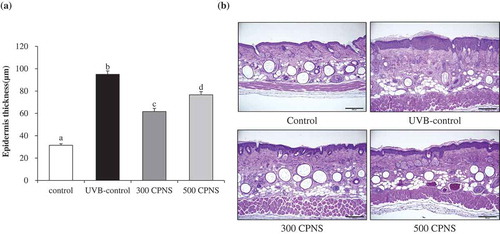Figures & data
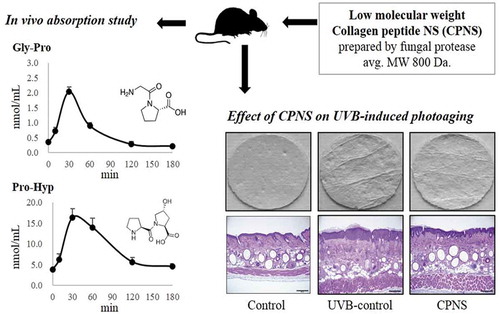
Figure 1. Gel permeation chromatography profile of CPNS. CPNS prepared from fish scale was analyzed using an Ultra hydrogel column, and elution monitored by absorbance at 220 nm. Arrow indicates elution positions of the standard peptide. (a) peak of avg. MW 650 peptides, (b) peak of avg. MW 1,500 peptides, (c) peak of Gly-Pro dipeptide.
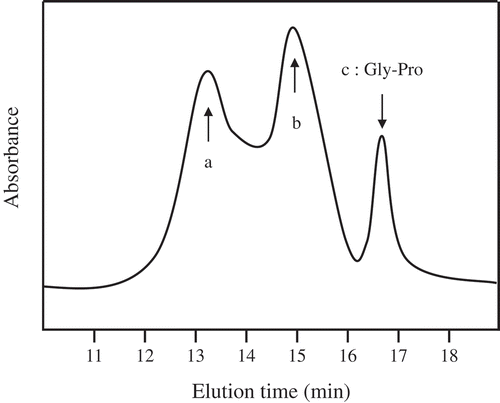
Figure 2. Effects of CPNS on the level of MMP-1 production and type 1 procollagen synthesis in UVB-irradiated HDF cells (25 mJ/cm2). (a) Effect of CPNS on HDF cell viability was determined by MTT assay (b) UVB-induced MMP-1 (ng/mL) concentrations, and (c) type 1 procollagen (ng/mL) concentrations were determined by ELISA. Symbols (-) and (+) designate the two control groups (unexposed and exposed to UVB, respectively).
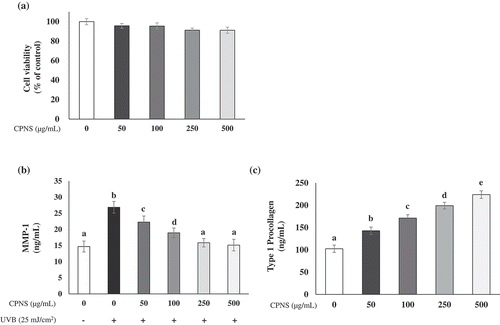
Figure 3. Effects of Gly-Pro, Pro-Hyp and Gly-Pro-Hyp on the level of MMP-1 production and type 1 procollagen synthesis in HDF cells. (a) UVB (25 mJ/cm2)-induced MMP-1 (ng/mL) concentrations, and (b) type 1 procollagen (ng/mL) concentrations were determined by ELISA. Symbols (-) and (+) designate the two control groups (unexposed and exposed to UVB, respectively).
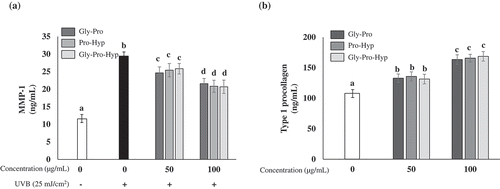
Figure 4. Mean plasma concentration-time profiles of Gly-Pro (a), Pro-Hyp (b), and Gly-Pro-Hyp (c) after oral administration of CPNS to Sprague-Dawley rats. Each bar represents the mean ± standard deviation (n = 5).

Figure 5. Effect of CPNS supplementation on UVB-induced wrinkle formation. The dorsal skin surface of hairless mice was exposed to UVB three times a week for 12 weeks, and the mice were supplemented with saline or CPNS. At the end of the experiment, (a) skin replica images were obtained and (b) total wrinkle area and (c) number of wrinkles were analyzed by using a Visioline® VL 650 device.
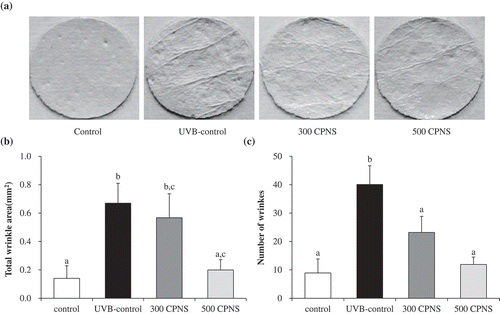
Figure 6. Effect of CPNS supplementation on UVB-induced skin barrier disturbance. The dorsal skin surface of hairless mice was exposed to UVB three times a week for 12 weeks, and the mice were supplemented with saline or CPNS. At the end of the experiment, (a) TEWL and (b) SC hydration were measured by using a Vapometer® and MoistureMeterSC®, respectively.

Figure 7. Effect of CPNS supplementation on UVB-induced epidermis thickness. The dorsal skin surface of hairless mice was exposed to UVB three times a week for 12 weeks, and the mice were supplemented with saline or CPNS. At the end of the experiment, histological analysis was performed to evaluate (a) epidermis thickness. (b) Histological sections were stained with hematoxylin and eosin.
